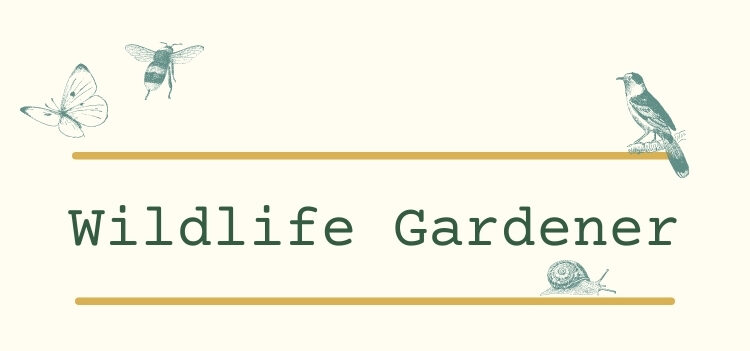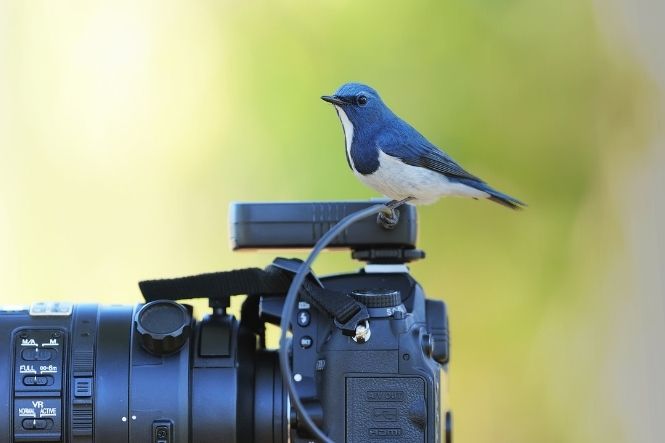We have all become very used to seeing wonderful wildlife photography in glossy magazines and on our televisions, but great pictures such as these are usually the product of dedication, knowledge and a good deal of waiting. However, with a little care and patience, budding bird photographers can produce some excellent images without ever leaving home. A good wildlife garden can offer unparalleled opportunities to photograph a wide range of our feathered friends and whether you prefer traditional film or digital cameras, there should be no shortage of possible subjects. Making the most of your chances really comes down to good preparation, knowing your birds – and a healthy measure of luck.
Challenging Subjects
Although wild birds are very familiar visitors to our gardens, as photographic subjects, they can be more of a challenge to the photographer than some of the big game on an African safari. You can seldom get very close to them and their small size makes long-distance shots impossible for all but the most serious of photographic equipment.
However, the one major advantage of bird photography in the wildlife garden lies in the number of days you have to try – unlike that one-in-a-lifetime holiday. Careful observation can often give you a good insight into the best times, since birds can often be creatures of habit. Moreover, you also have the chance to tempt them in and gain their trust, in a way that you can almost never achieve in any other branch of animal photography – so don’t skimp on that bird-seed!
Being Ready
It is all too easy to get hung-up on equipment; in reality, it really doesn’t matter what sort of camera you use; you can produce the most beautiful images with a very modest set up, or very poor pictures with the most expensive. Although a top-of-the-range camera and the sort of high quality long lenses that wouldn’t look out of place among the paparazzi does make the technical side easier, there is no substitute for the skill of the photographer and – above all – being in the right place at the right time. There is a saying amongst professional photographers that the perfect sunset cannot be chased – and the same holds true for bird photography. You simply have to be in the right place and ready, ahead of time. It is also important to be thoroughly familiar with your camera and what it can do; the time to read up on how to compensate for strong lighting is certainly not the moment that the rarest of occasional European winter visitors lands on your bird table!
Think “Bird”
Birds are naturally cautious and however much you may come to think of those which frequent your garden as “yours” they, of course, remain wild and their survival depends on their constant vigilance. Bearing this in mind makes taking that great photo much easier, if only because it makes you much quicker to take your chances when they present themselves, rather than taking too long to get everything set up. If you view the very first shot as if it were the one, your chances of success will be much bigger; that said, however, the more pictures you can snap, the more likely you are to get something really worthwhile. This is one area where digital cameras – with no film or processing costs – have an enormous advantage over their traditional counterparts.
Although birds are often nervy around humans, they are surprisingly tolerant of activity within the house and this offers the opportunity to use your home as a giant hide. Positioning your bird table or feeding area near to a convenient window – within range of your camera – can let you get closer to your intended subjects than you could possible hope to manage out in the open. However, do remember that taking photographs through glass can bring its own problems so be careful how you use any auto-focussing – and definitely no flash!
Photographing Birds and The Law
All wild birds are protected by law in Britain – the main piece of legislation in England, Scotland and Wales being the Wildlife and Countryside Act 1981. Generally speaking, photographing wild birds is perfectly legal – although you should always be careful not to harass any species around its nest. Taking photos of a number of rare breeding birds – listed on Schedule 1 of the Act – is, however, restricted if it involves any danger of disturbance being caused and requires a licence. The legal status of different kinds of bird is subject to change, so it is always best to be on the safe side and check with the RSPB if there is any doubt.
Photographing the birds in your wildlife garden can be a great way to keep a permanent record of the regulars and the occasional visitors who call by – as well as giving you a perfect reason to learn a bit more about some of our most familiar wildlife.

